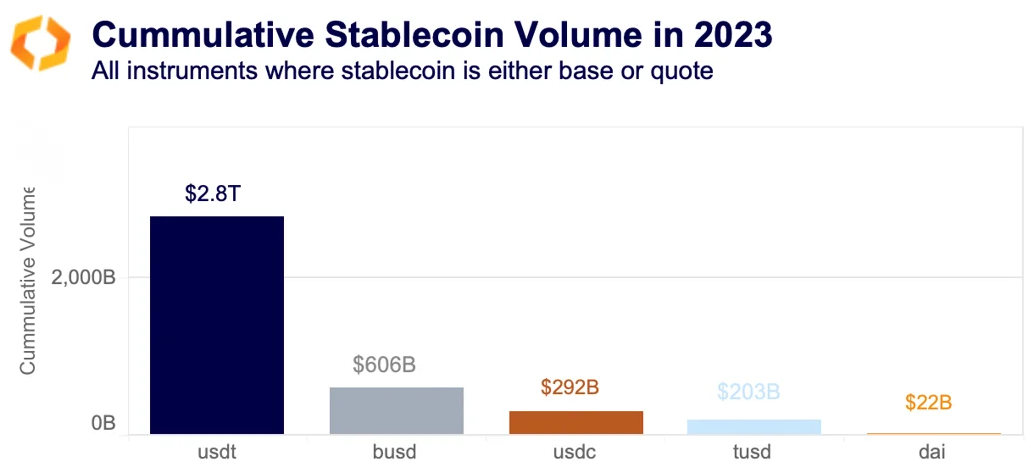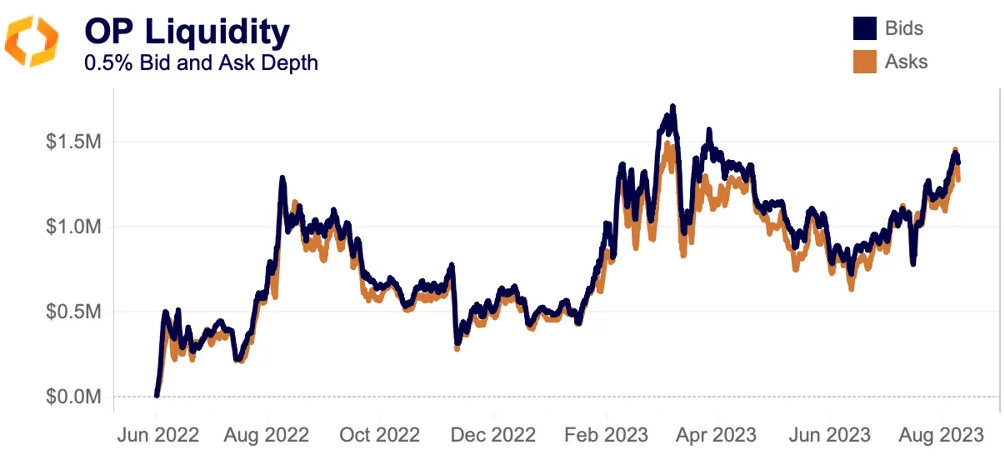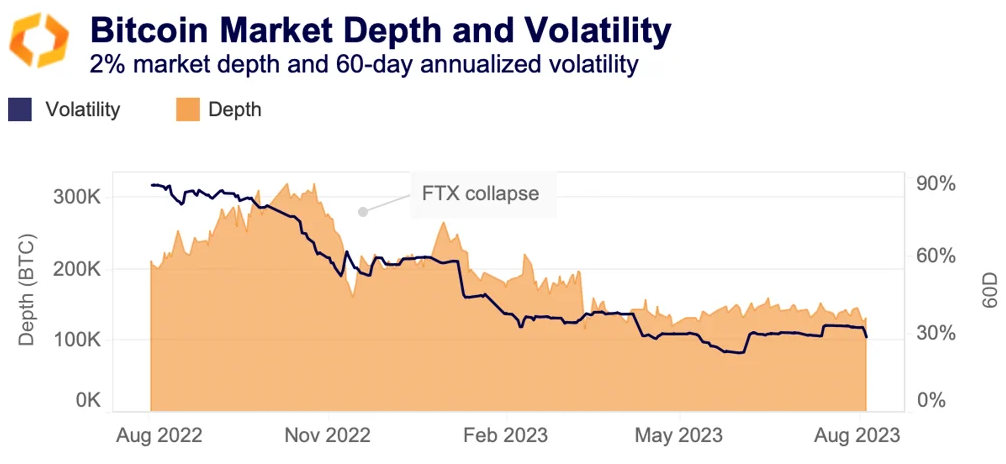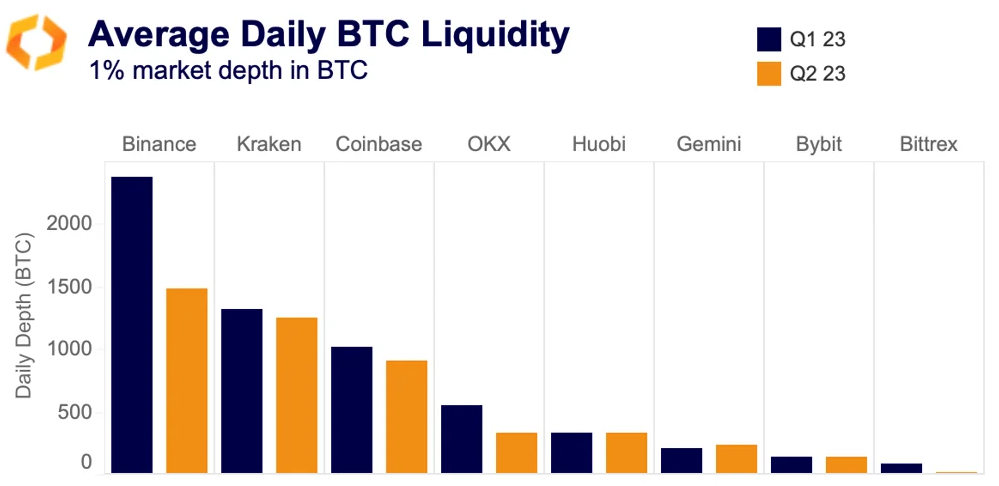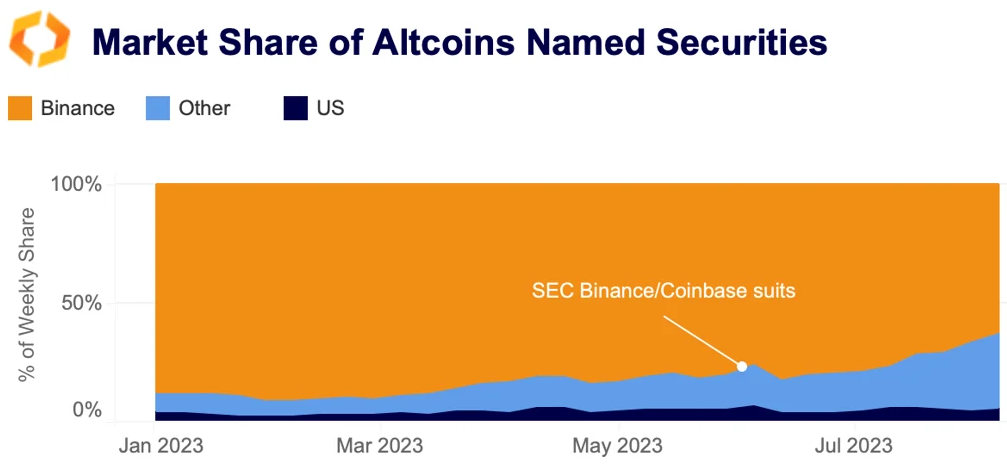A summarizing review of what has been happening at the crypto markets of the past week. A look at trending sectors, liquidity, volatility, spreads and more. The weekly report in cooperation with market data provider Kaiko.
Last week, the U.S. SEC delayed its decision on the Ark 21Shares Bitcoin spot ETF application and said it will appeal the Ripple court ruling, Coinbase officially launched its Base Blockchain, while Bitstamp announced it will halt altcoin markets for U.S. traders. The U.S. Fed added Hedera-based Dropp to its list of FedNow service providers. This week, we explore:
- Stablecoin volume trends as Curve sees outflows
- The persistence of the "Alameda Gap" in liquidity
- Bitcoin trading volume during U.S. hours
Curve 3pool loses $175mn in liquidity this summer
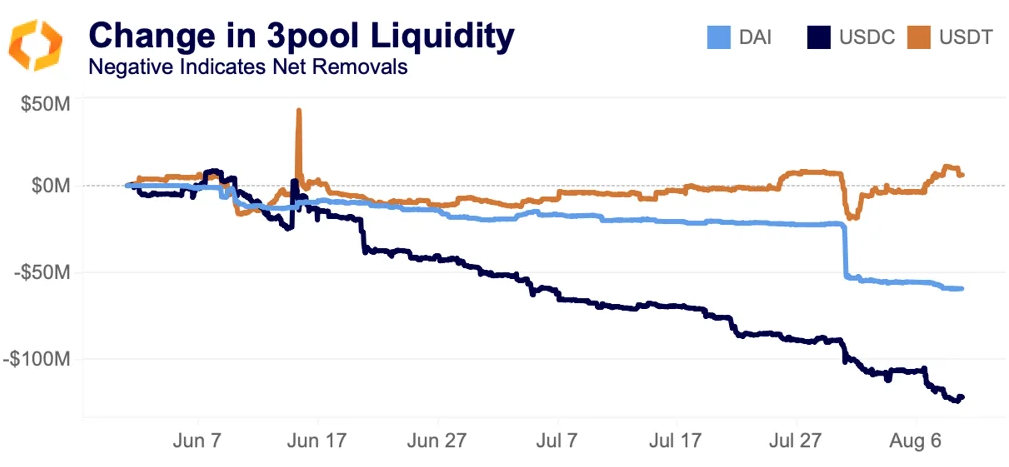
The Curve 3pool – long one of the most important sources of liquidity for DAI, USDC, and USDT – has continued to bleed this summer, shrinking by $175mn. This outflow has been primarily led by USDC; users have withdrawn $125mn of Circle’s stablecoin. By this metric, USDT has remained roughly even while $60mn DAI has been removed, $25mn of which came in just three transactions on July 31.
USDT remaining flat speaks to skittishness around the token right now, as users are incentivized to remove USDT given that it makes up a disproportionate amount of the pool. As of this writing, burning 1mn LP tokens would net users 1.027mn USDT compared to 1.026mn USDC.
Maker DAO recently voted to increase its Enhanced DAI Savings Rate (DSR) to a maximum APY of 8%. Since the proposal passed in late July, the amount of DAI deposited to earn the DSR has jumped from $300mn to nearly $1bn. Despite this, there is no obvious outflow of DAI from the 3pool (barring the three transactions discussed previously) or large trade imbalances on Curve or Uniswap.
The boosted DSR may give users a reason to hold and deposit DAI, but it seems unlikely to boost DAI volumes. Shown below is total stablecoin volume YTD; USDC has 12 times DAI’s volume while USDT has more than 100 times its volume.
Stablecoins remain the dominant trading partner for crypto, with the majority of pairs on the largest centralized exchanges denominated in stablecoins (blue). The major exceptions to this rule are U.S. exchanges, especially Kraken and Coinbase.
However, since July 2022, USDC and USD pairs on Coinbase have been unified, blurring the line between fiat and stablecoin. Despite strong stablecoin volumes on centralized exchanges, DAI has never been able to register significant volumes on these platforms.
OP liquidity nears all-time high as Base attracts activity
Liquidity for Optimism (OP) has surged since June, with both bids and asks within 0.5% of the mid price doubling from $750k to $1.5mn. d in March 2023, just weeks after OP hit its ATH price of about $3.20; OP’s price is about 50% below this level as of this writing. Optimism – an Ethereum layer 2 network – has been boosted by the recent popularity of Base, Coinbase’s Ethereum L2 built on Optimism’s technology. In a blog post, Base stated that it will provide a percentage of transaction fees to the Optimism Collective – the DAO that governs Optimism.
The “ Alameda gap” persist amid low volatility
Despite BTC prices rallying by more than 70% this year, the "Alameda gap" — the sharp decline in liquidity we observed after the collapse of FTX and its sister company Alameda Research — has persisted.
Bitcoin 2% market depth on top centralized exchanges has continued to deteriorate in 2023, stabilizing at around 5k BTC, more than 60% below its Oct 2022 level.
While this is partly due to structural reasons — i.e. market makers leaving the space after sustaining losses or permanently revising their risk management strategies after FTX — the low volatility environment is also playing a role in keeping liquidity providers out of the market.
Advanced traders who benefit from price swings have left the market en masse over the past months due to the decline in volatility. With trade volumes at multi-year lows, market makers who earn their revenue through the bid-ask spread on large number of trades, are less incentivized to provide liquidity even though volatility is low.
Looking at the average daily BTC liquidity on top exchanges in native units, Binance has seen the strongest drop in Q2 relative to the previous quarter. This is likely due to heightened regulatory uncertainty and the exchange removing its zero fee BTC promotion. OKX, Coinbase, and Kraken also registered a decline while, interestingly, smaller exchanges performed better, with BTC liquidity remaining flat on Bybit and increasing slightly on Gemini.
Overall, the low volume and liquidity environment is likely to exacerbate competition between exchanges and projects which often need agreements with liquidity providers for their tokens.
Binance sees strong decline in altcoin market share
Last week Bitstamp announced it will halt trading for some altcoins named securities by the U.S. SEC in its suits against Binance and Coinbase. The move follows other platforms such as Robinhood, Bakkt, and eToro.
Interestingly, looking at the market share of trade volume of these altcoins, the share of U.S. exchanges has remained relatively flat at around 6% this year. In contrast, Binance has seen a continued decline with its market share falling to its lowest level since January 2022. This has benefited other offshore exchanges, with Poloniex and Huobi registering the largest increases.
BTC correlation with bonds and equities rises
BTC correlation with U.S. equities and investment grade bonds prices (as proxied by iShares Core U.S. Aggregate Bond ETF - AGG) has risen to 40% and 33% respectively in August. The trend suggests that BTC is increasingly moving in tandem with traditional assets after being mostly uncorrelated to both equities and bonds this year. The U.S. equities rally has faltered over the past few weeks while yields (which move inversely to prices) rose due to the combination of strong U.S. activity indicators, fears around China's property sector, and the impact of Fitch’s downgrade of the U.S. government credit rating. BTC has been declining since early July after increasing by 13% in June.


